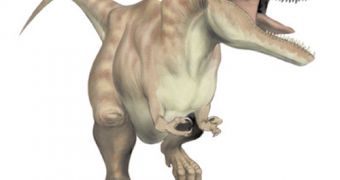If a hungry T-rex chased you, you would stand no chance. The smallest dinosaurs were as fast as a racehorse, with about 40 mph (64 kilometers per hour), and even the huge Tyrannosaurus rex could outrun average people.
Computer models were employed to calculate the top speeds for 5 carnivore dinosaurs. The velociraptor, a speedy and ferocious star from "Jurassic Park," could speed up to 24 mph (38 kilometers per hour), while the 6 tonnes T. rex "only" 18 mph (29 kilometers per hour). "Our research, which used the minimum leg-muscle mass T. rex required for movement, suggests that while not incredibly fast, this carnivore was certainly capable of running and would have little difficulty in chasing down footballer David Beckham, for instance," said co-author Phil Manning, a paleontologist at the University of Manchester.
An elite human sprinter cannot run faster than 25 mph (40 kilometers per hour).
One of the smallest dinosaurs, Compsognathus, 6.6 pound (3 kg) heavy, with roughly 40 mph, outrun by 5 mph an ostrich, the fastest living modern bipedal animal. "We fed information about the skeletal and muscular structure of the dinosaurs into the computer and ran a simulation tens of millions of times to see how fast the animals moved. People have estimated speeds before, but they have always been indirect estimates and hard to verify. What we found is they were all perfectly capable of running," said lead author William Sellers, a zoologist at the University of Manchester.
"Looking at how these ancient animals lived and died out is also important in trying to predict how modern-day species may cope with future climate change. This study helps to build a biological picture that scientists can use to better understand how dinosaurs adapted to changes in the weather just before they went extinct some 65 million years ago," added Sellers.
"Knowing how these animals coped over the past millions of years will give us clues to what is going to happen over the next thousand years."

 14 DAY TRIAL //
14 DAY TRIAL //